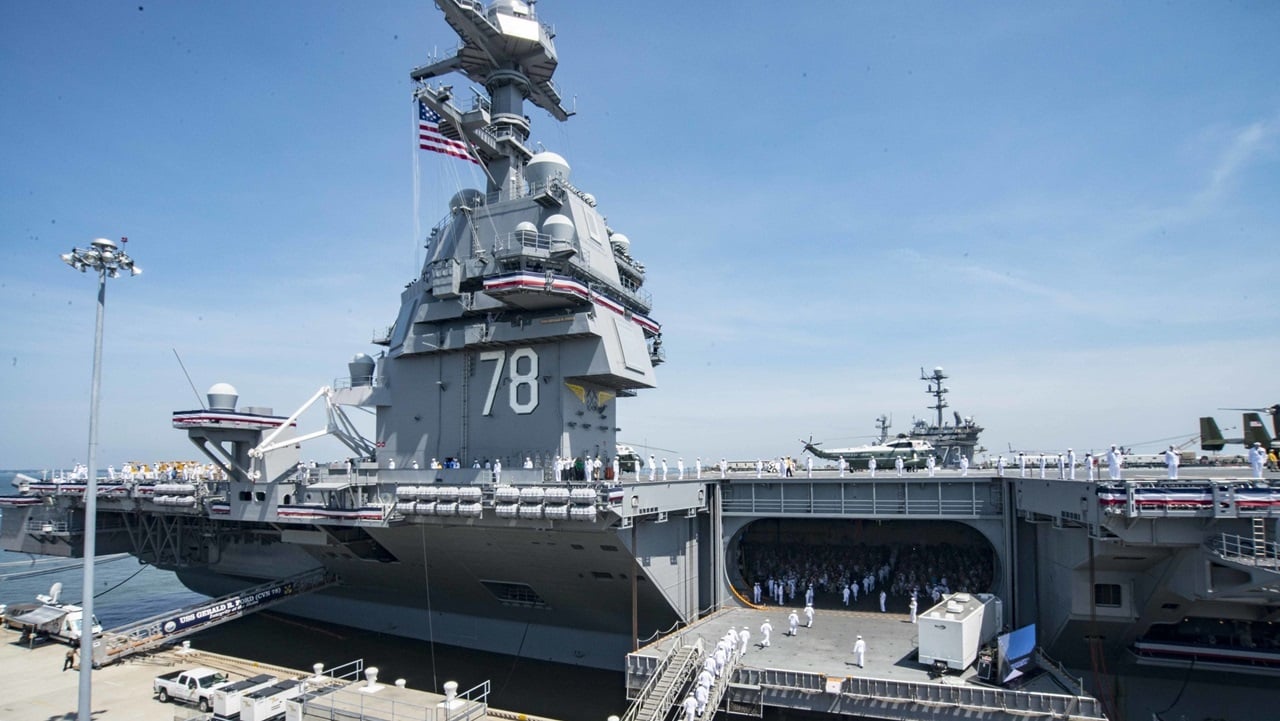Navy Secretary Carlos Del Toro’s recent review highlighted these issues, which have delayed delivery of the USS Enterprise (CVN-80) until 2030.

Resume: The U.S. Navy’s Ford-class aircraft carriers are facing significant delays and cost overruns, largely attributed to ambitious technology integrations and recent supply chain disruptions.
-Initiated with 23 new technologies, including the remarkable Electromagnetic Aircraft Launch System (EMALS), these airlines have encountered numerous system integration challenges that have impacted their planned deployment.
-The introduction of such advanced technologies, while aimed at improving operational capabilities, has significantly increased costs, with the program exceeding initial projections by $40 billion as of 2023.
Ford-class aircraft carriers: Innovation overrun leads to delays and budget increases
Nothing has gone smoothly for the Ford-class aircraft carriers since their inception.
The U.S. Navy’s newest aircraft carrier class is facing delays that could push the delivery of future ships into the next decade.
As outlined in a thorough review ordered earlier this year by Navy Secretary Carlos Del Toro, supply chain issues and other lingering effects of the pandemic are to blame.
Additionally, as the Navy’s newest carriers, the Ford-class ships incorporate a wide range of untested technologies.
The challenge of successfully integrating these systems is another factor delaying the introduction of the Ford class into the service sector.
The third Ford-class aircraft carrier planned for construction: the USS Company (CVN-80) – expected to be delivered to the service by 2030.
Ford Class: too many new technologies?
In 2011, Chief of Naval Operations Admiral Mike Gilday admitted that the Navy may have been too ambitious in designing the Ford class, packing the ships with a number of new and unfamiliar systems.
“We had 23 new technologies on that ship, which quite frankly increased the risk of delivery on time and cost from the outset.”
Gilday said, adding that “we really shouldn’t have to introduce more than maybe one or two new technologies on such a complex platform to ensure we keep risks at a manageable level.”
The Ford-class Electromagnetic Aircraft Launch System, or EMALS, is perhaps the most recognizable new technology.
This system is a departure from the steam-operated Nimitz-class aircraft carriers and promises higher sortie rates, among other improvements. However, in 2020, EMALS reliability figures remained well below expectations.
In addition to EMALS, issues surrounding Ford’s deflectors and advanced arresting equipment have also extended the timely introduction of the class into service.
Too high costs for these aircraft carriers?
Equipped with all these advanced technologies, the Ford class is exorbitantly expensive. Each ship in the series costs $13 billion to produce and maintain.
By 2023, the program had cost the Navy about $120 billion, which is about $40 billion more than the initial cost estimate.
The class requires more than 5,000 shipbuilders to work an estimated 49 million hours to build each ship, according to a video published by Business Insider last year. The new technologies on board the ships certainly drive up these costs.
For example, researching and testing the EMALS alone cost $1 billion, in addition to the $670 million installation of the system.

Supply chain problems?
As previously mentioned, supply chain issues also play a role in the late delivery of the Ford class. Huntington Ingalls’ president noted that delays in some specific areas are to blame.
The Navy’s Block IV Columbia-class and Virginia-class submarines also face supply chain issues.
About the Author: Maya Carlin
Maya Carlin, National Security Writer at The National Interest, is an analyst at the Center for Security Policy and a former Anna Sobol Levy Fellow at IDC Herzliya in Israel.
She has had bylines in many publications, including The National Interest, Jerusalem Post and Times of Israel. You can follow her on Twitter: @MayaCarlin.





